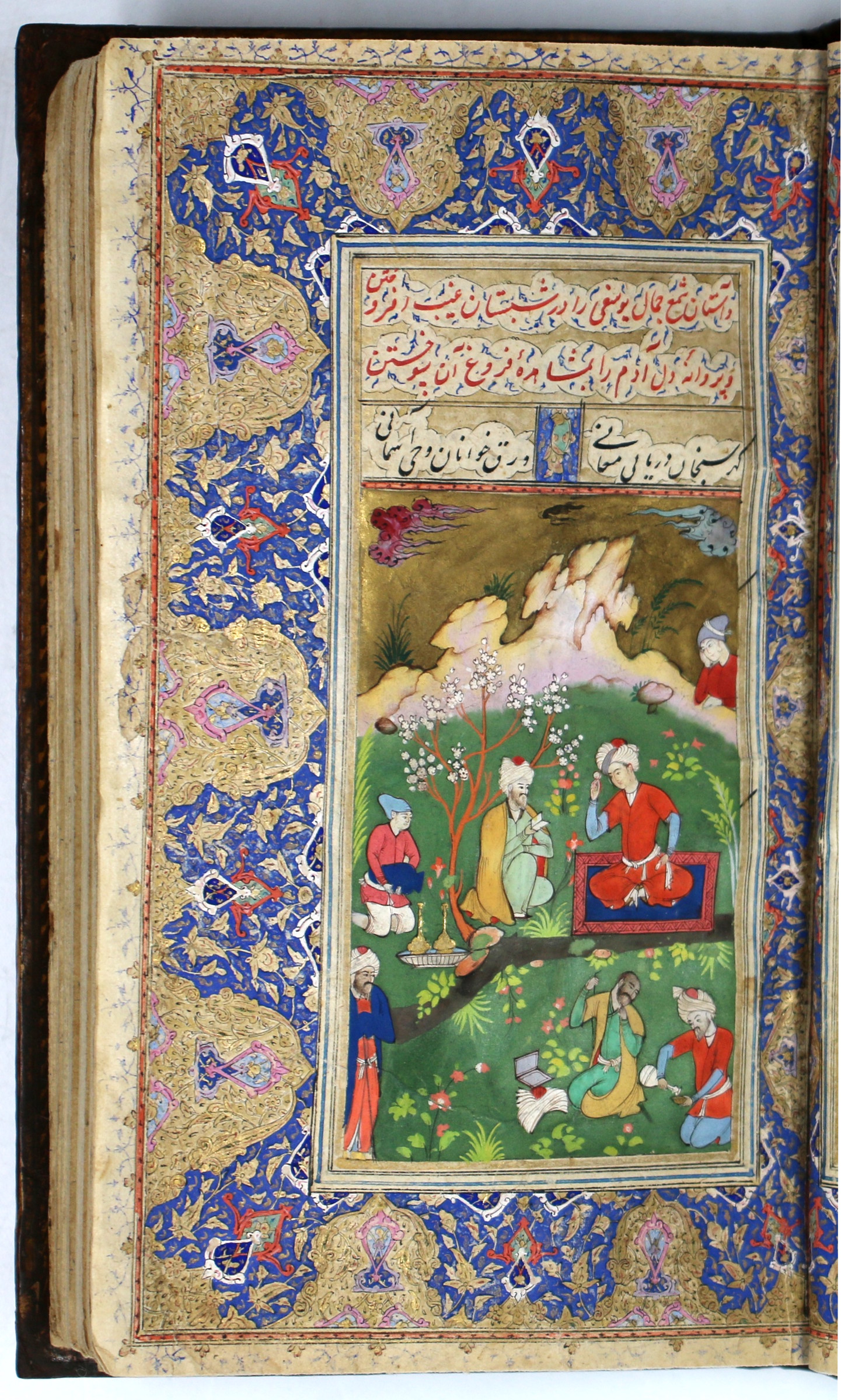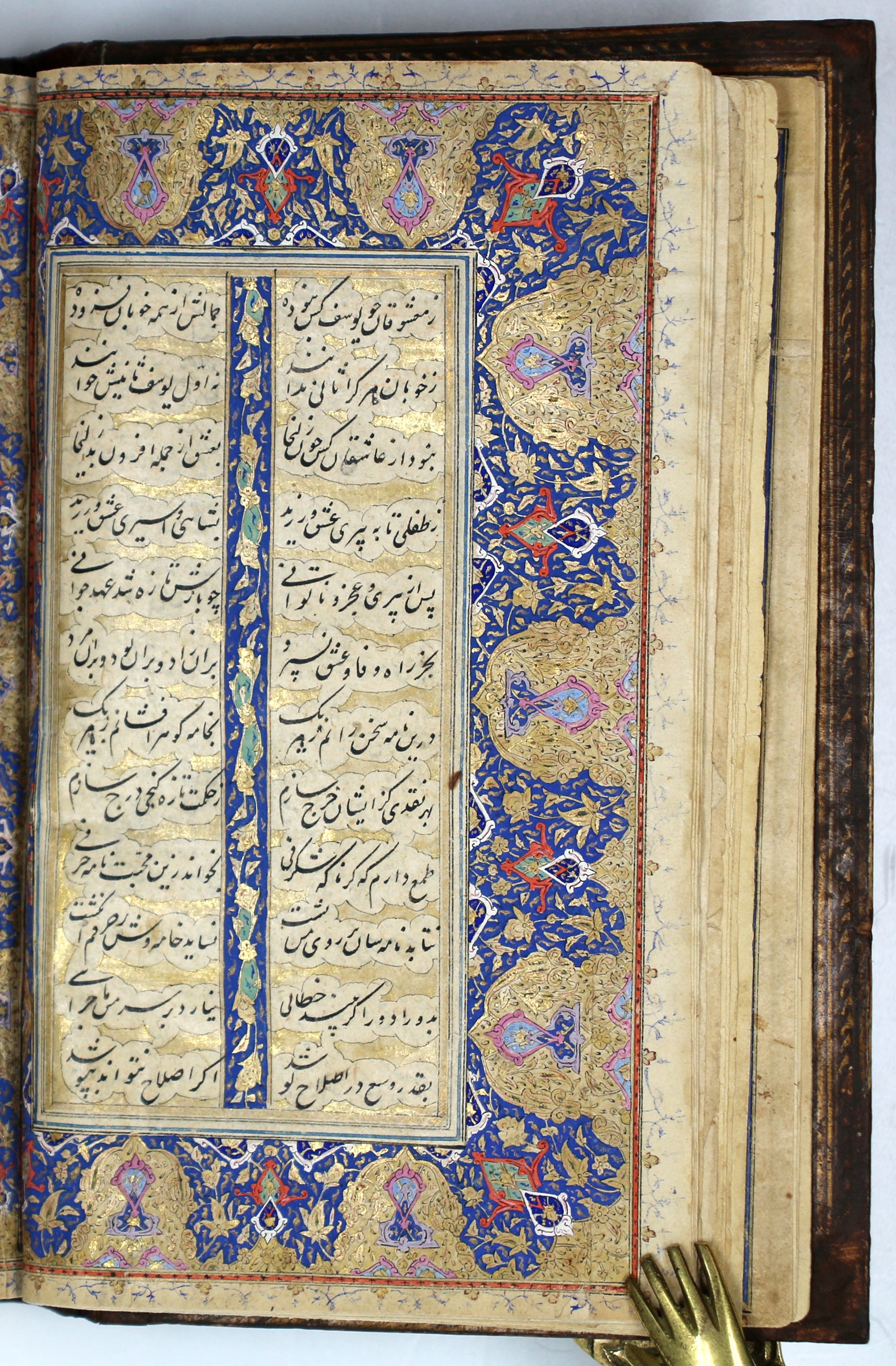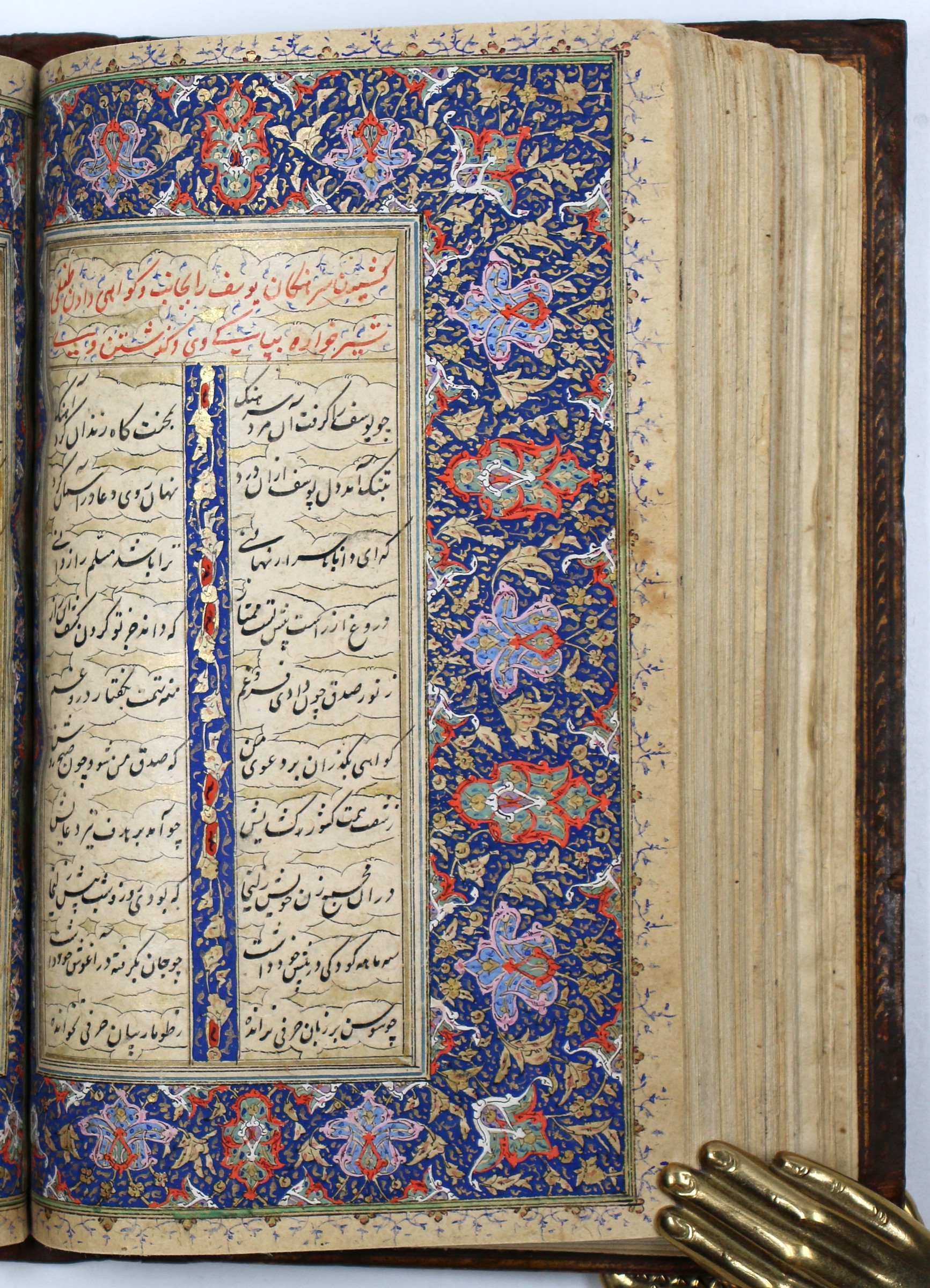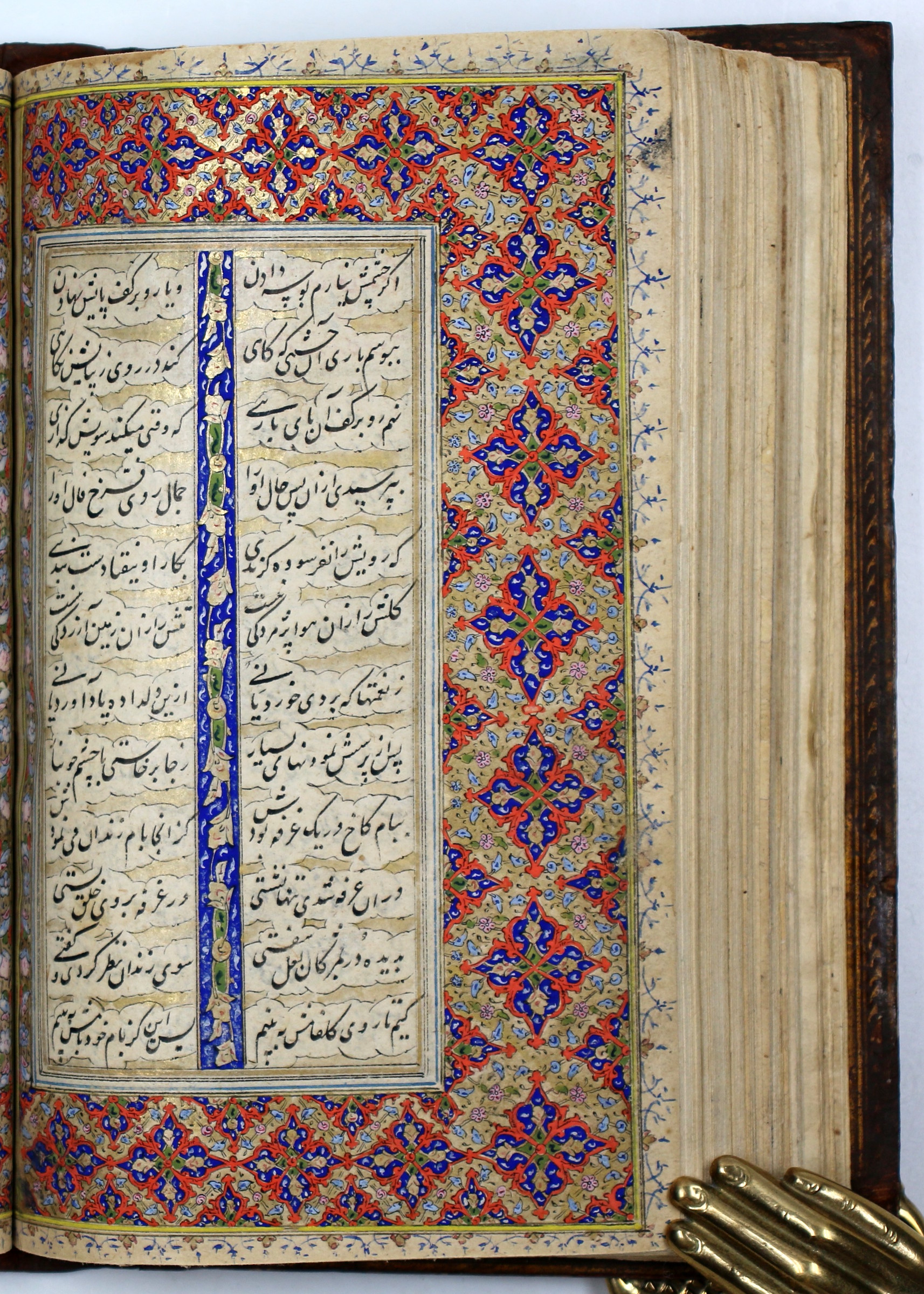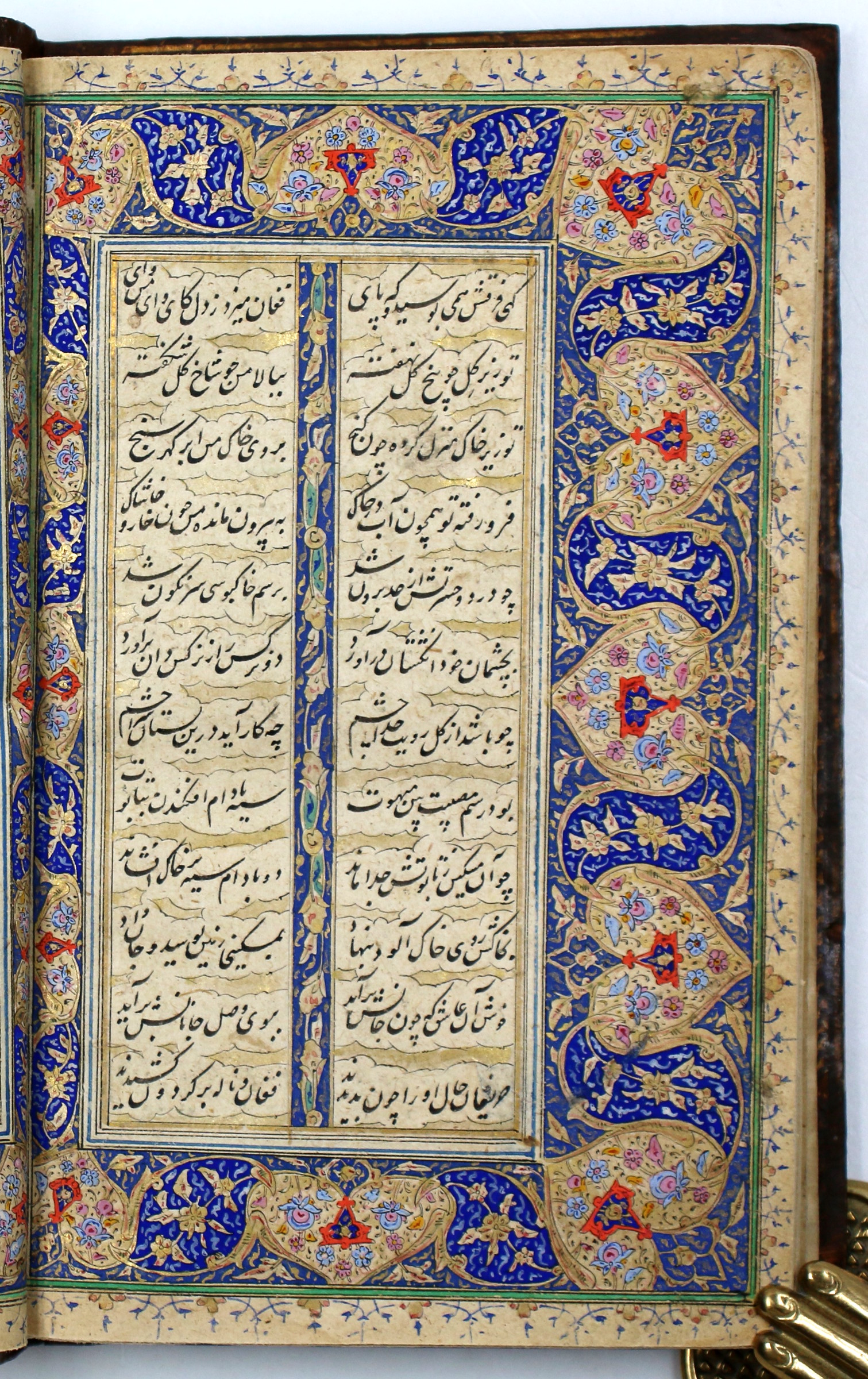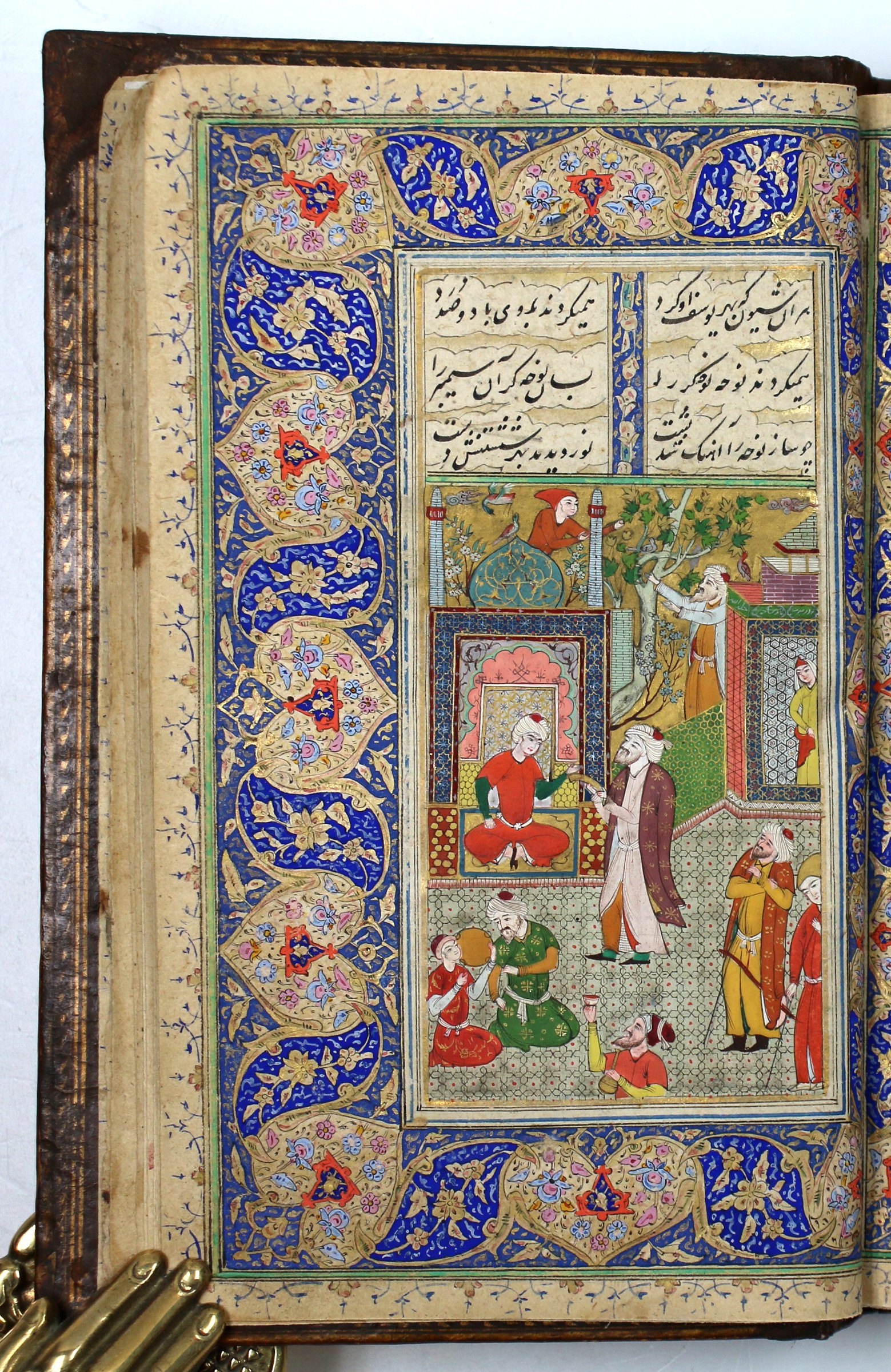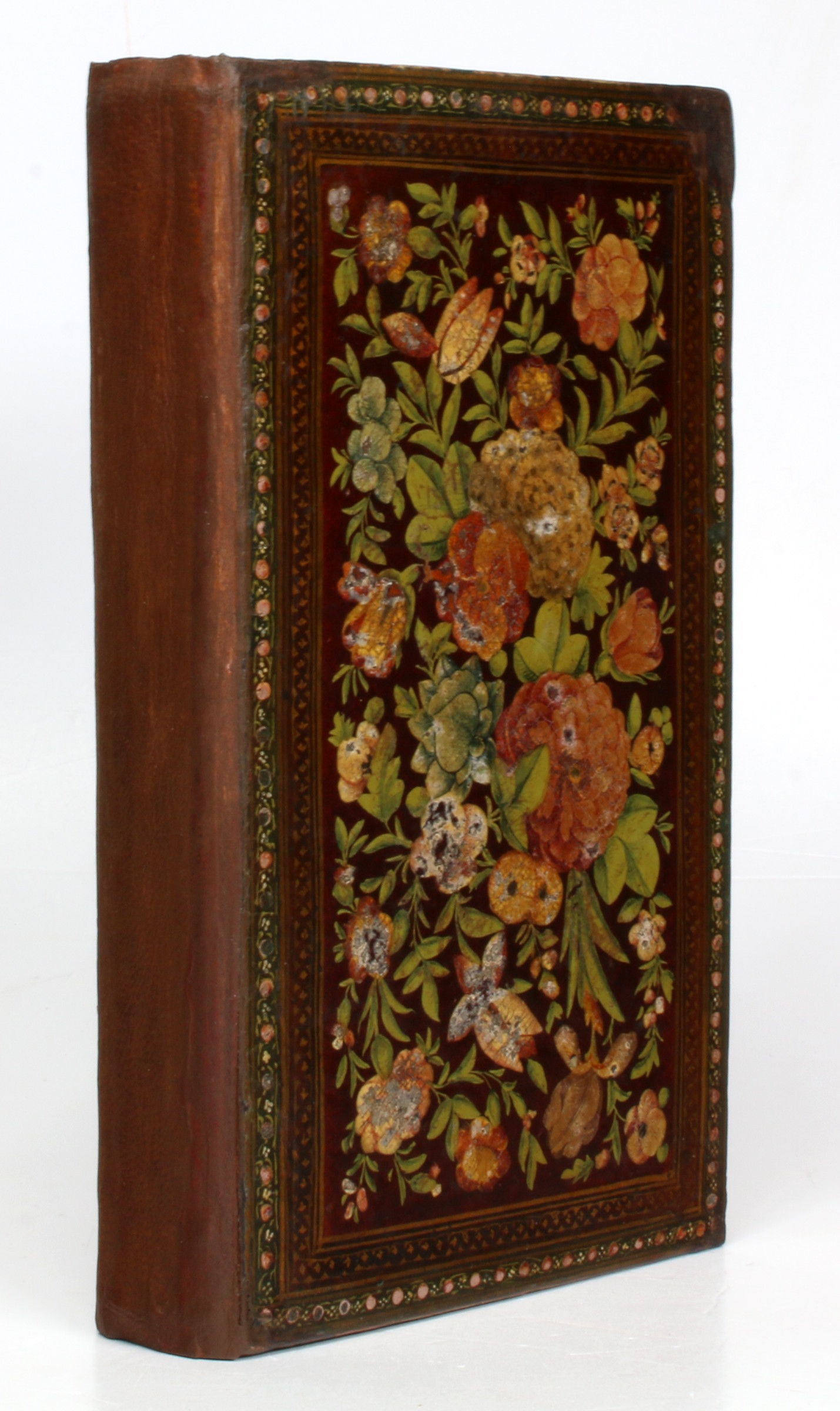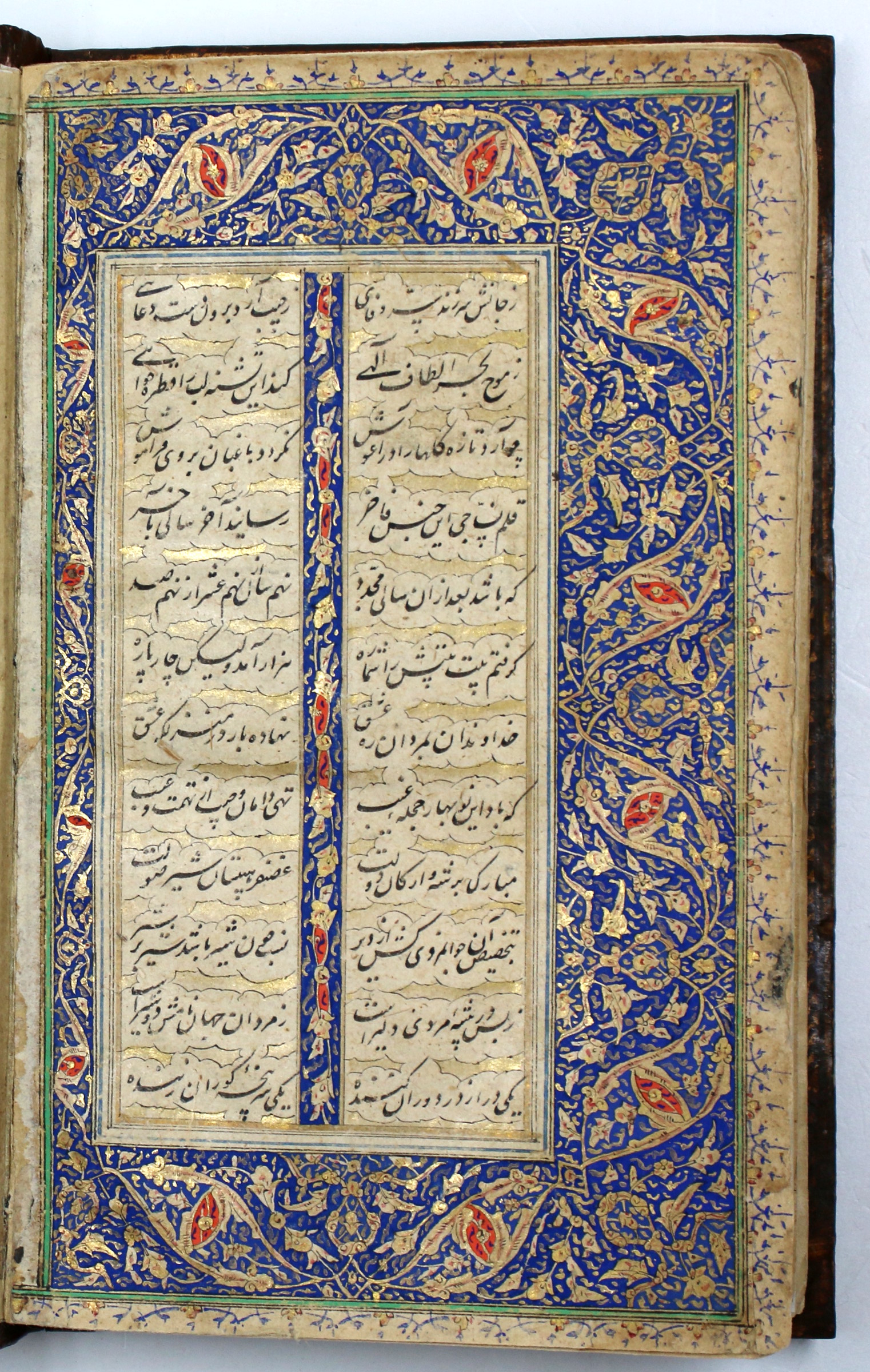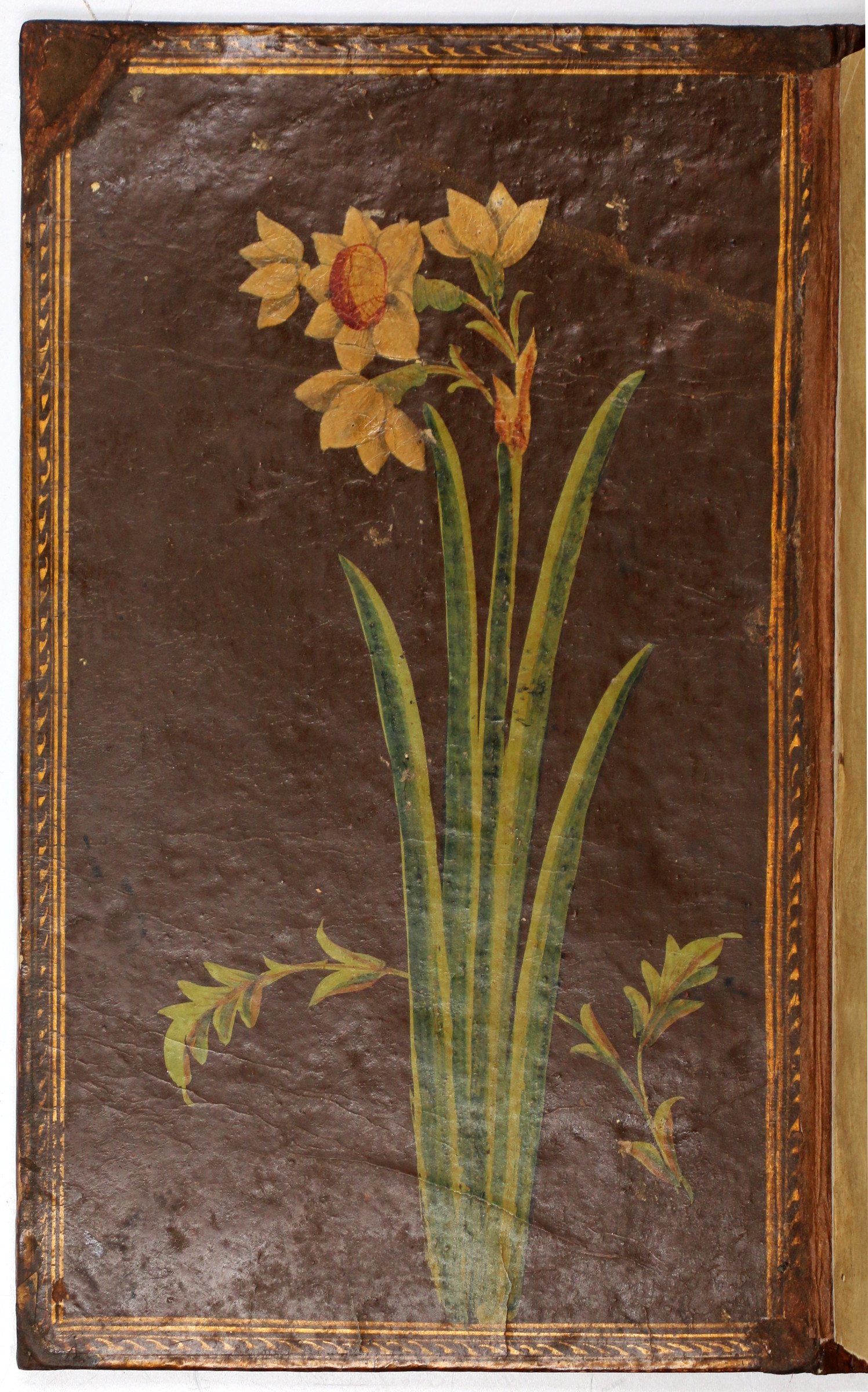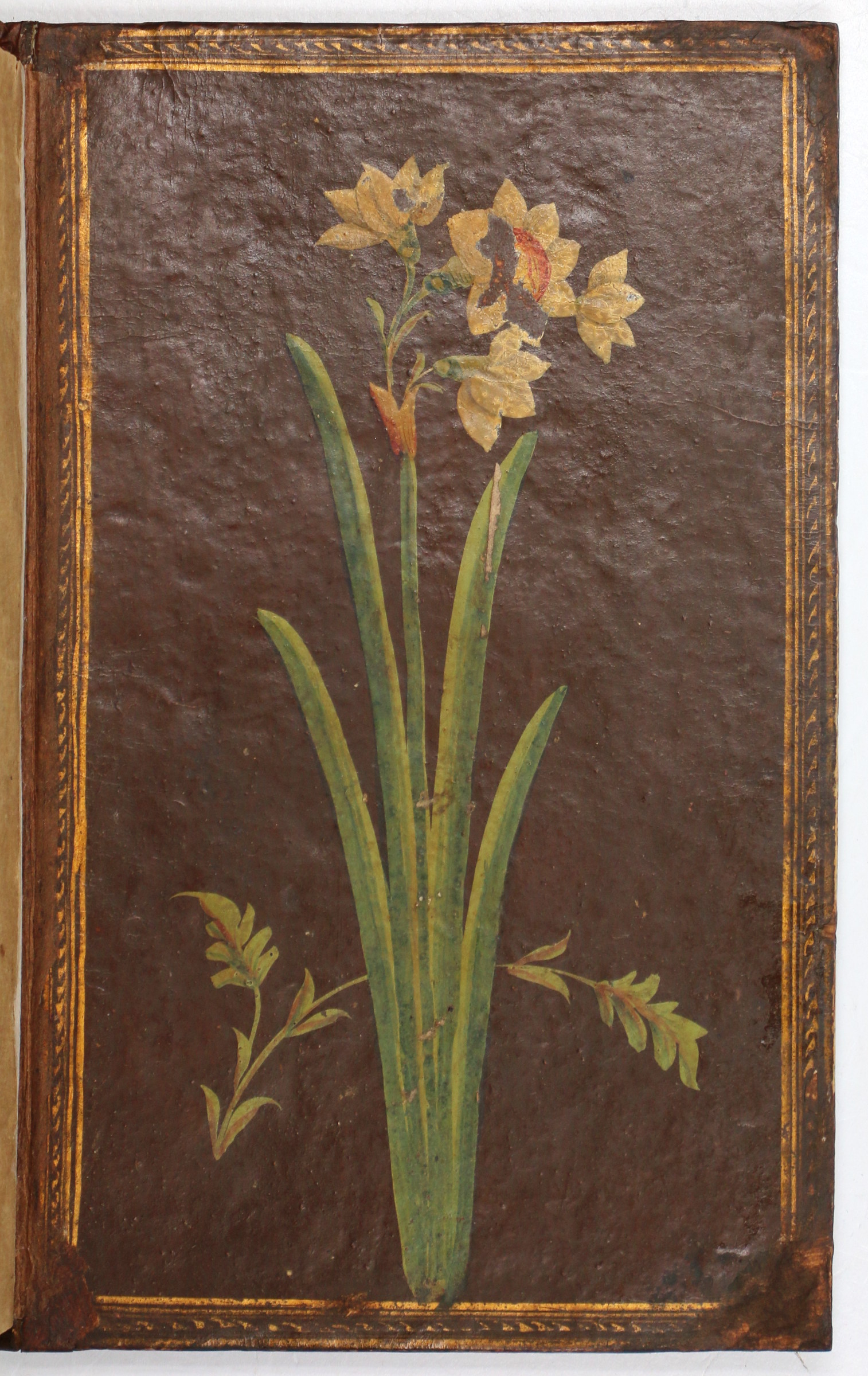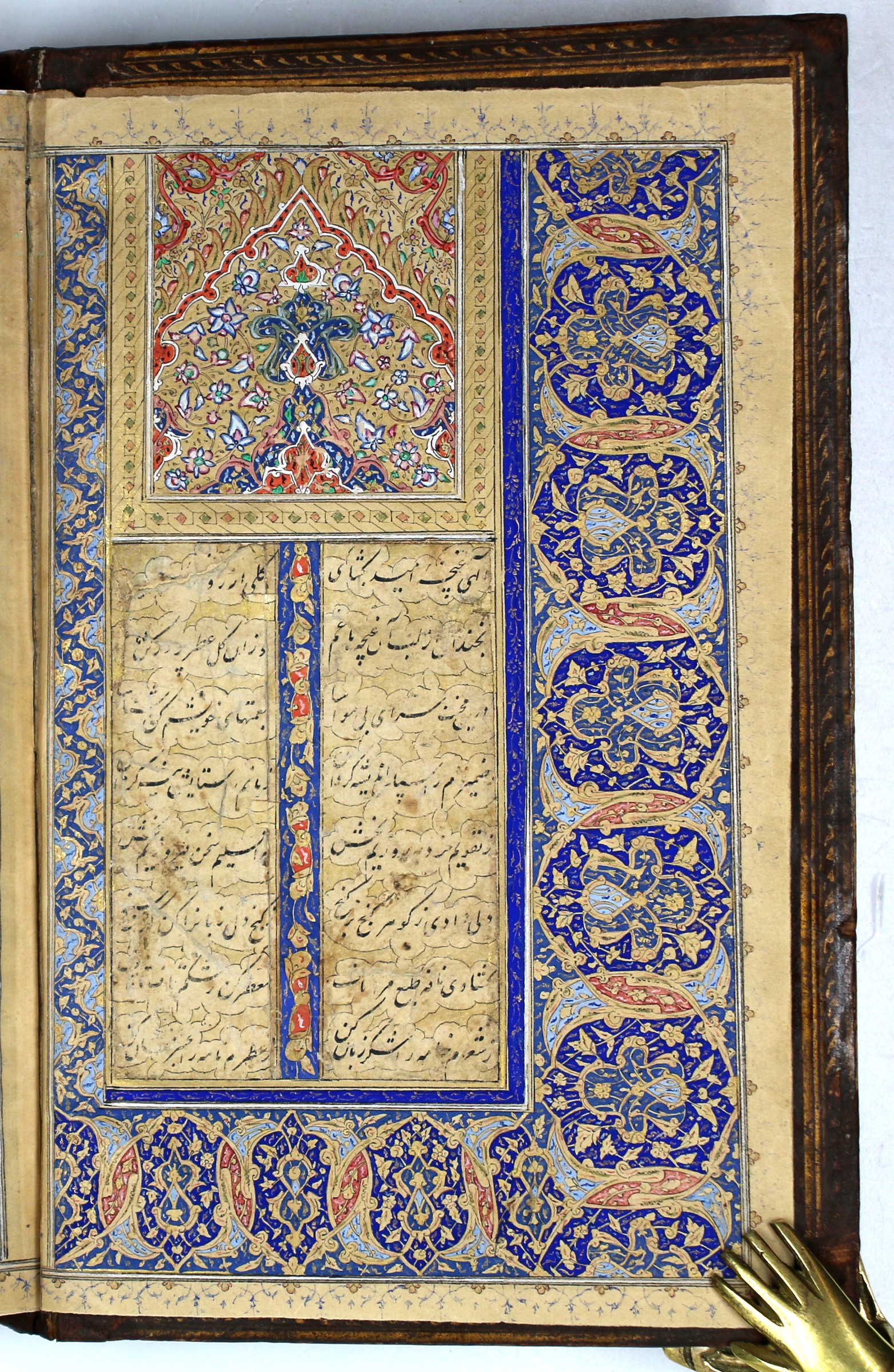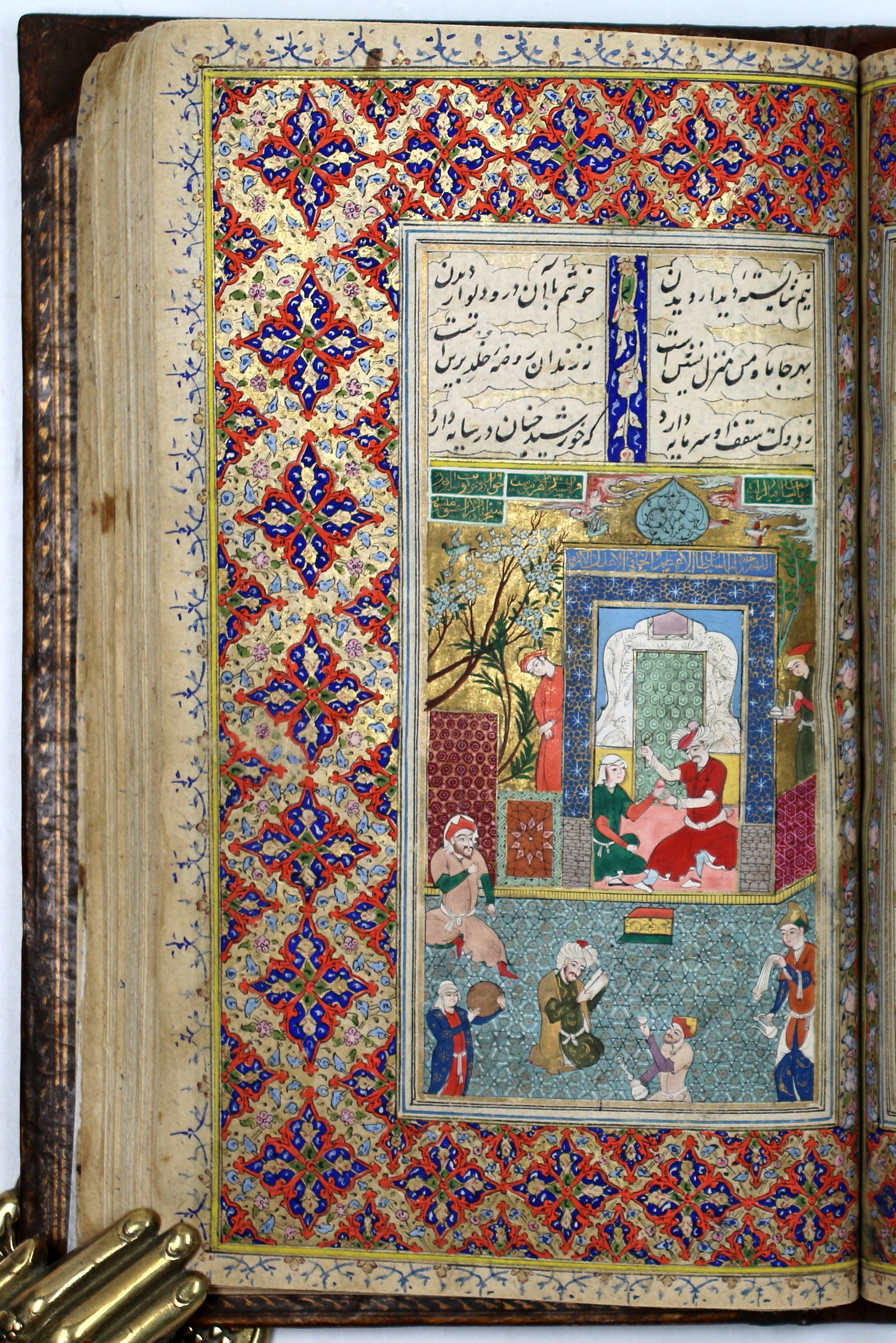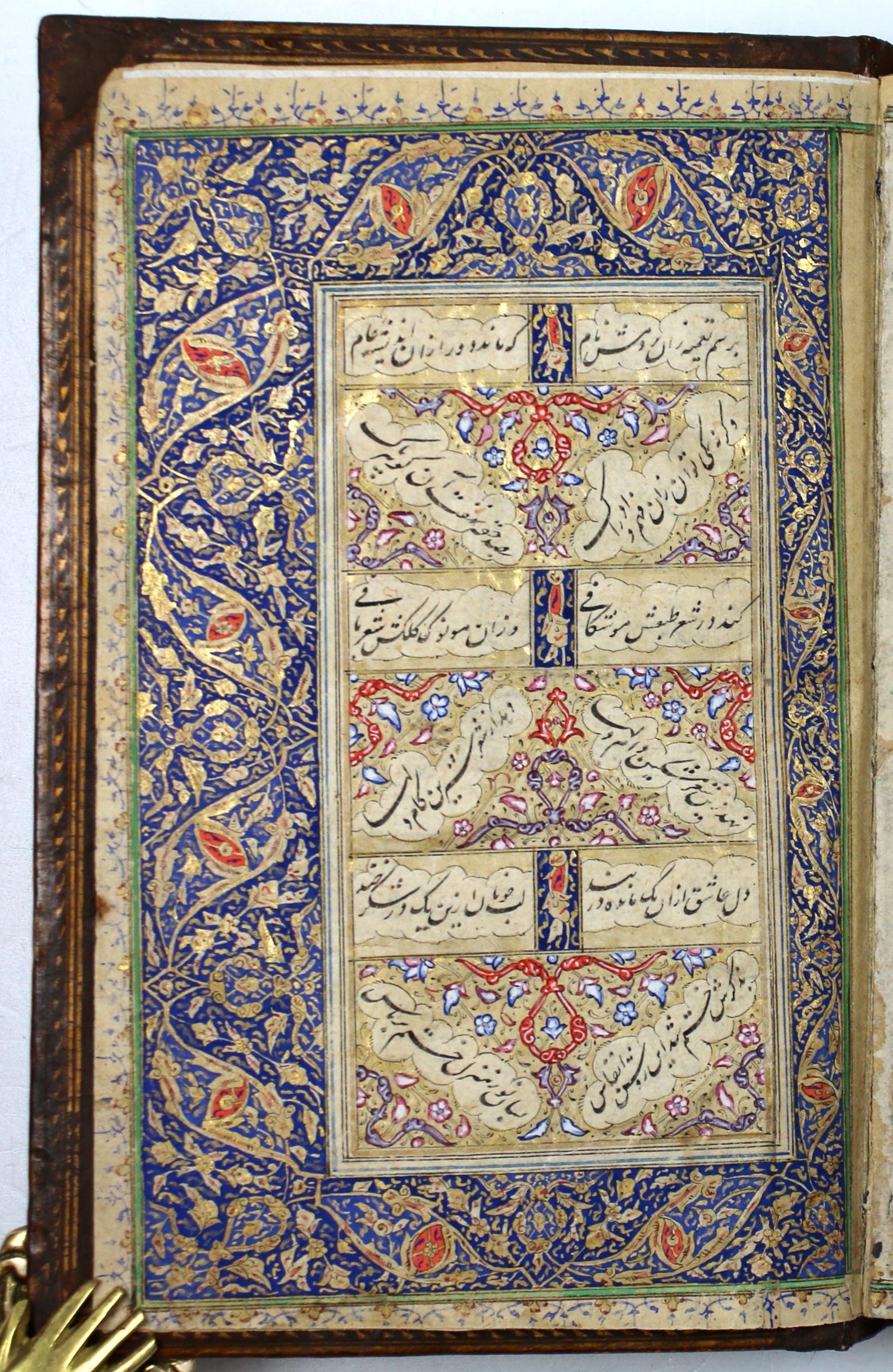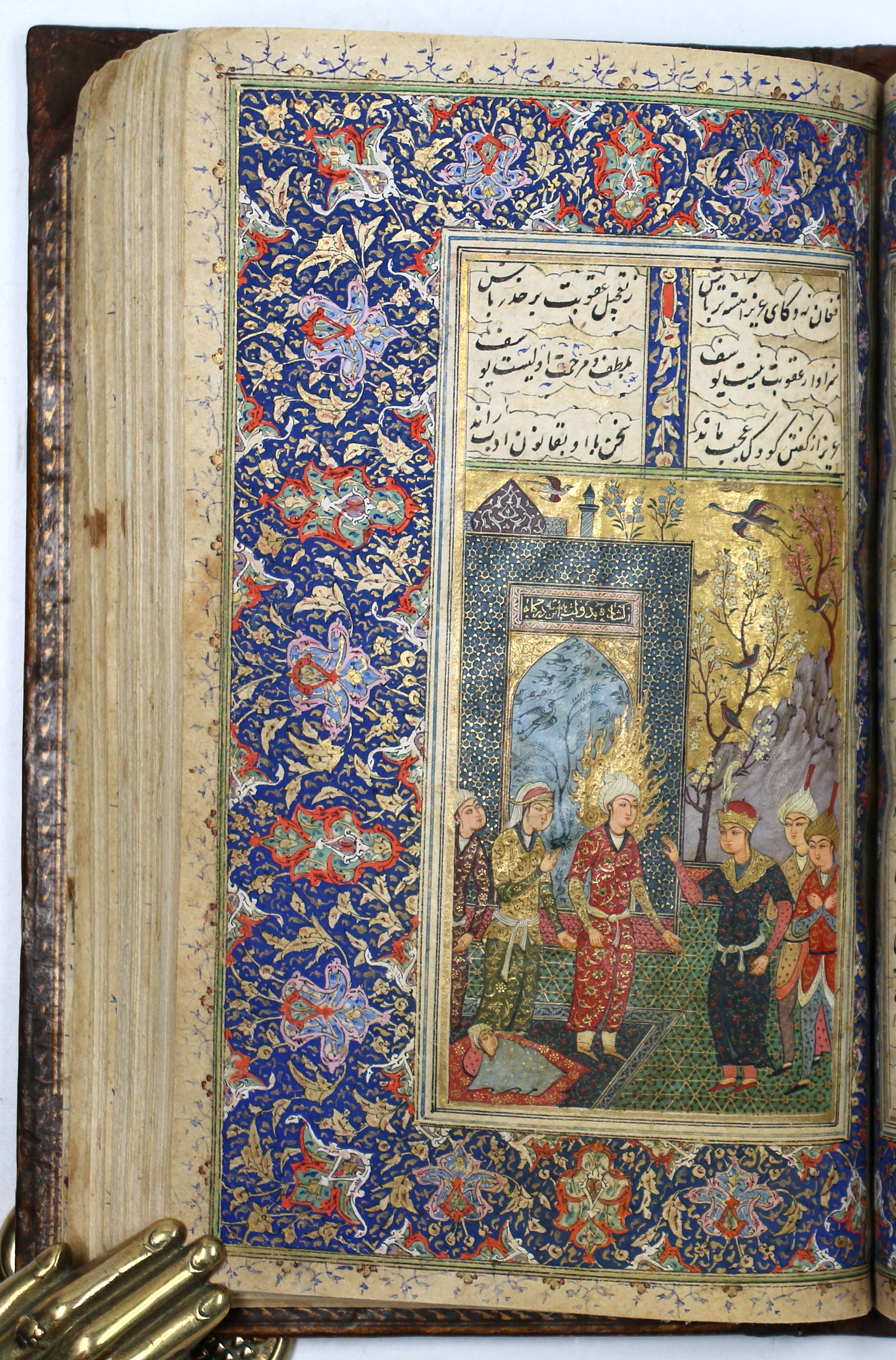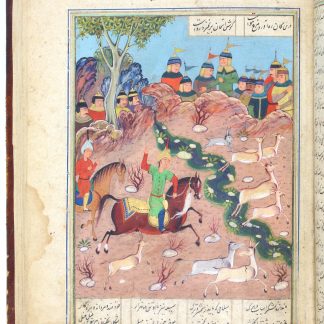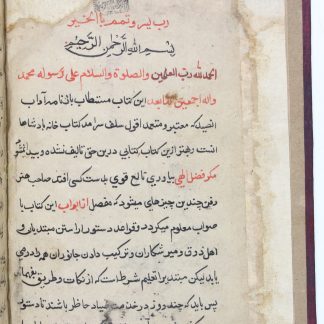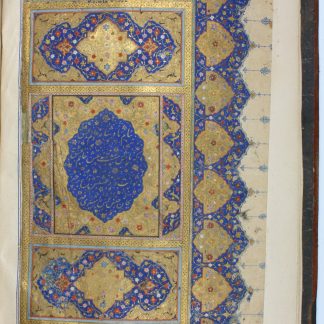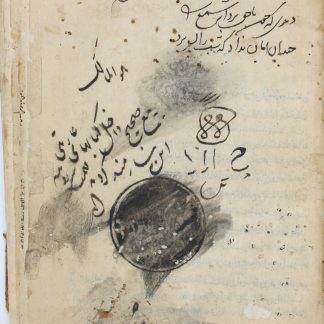An exquisite manuscript of a genre-defining Persian romance, with ten miniatures
Yusuf va Zulaykha.
8vo (125 x 205 mm). 174 ff. Persian manuscript on paper. Black nasta'liq in cloudbands on a field of gold, double-columned, columns blue and gold with a floral design, ruled in gold and blue. Miniatures are nearly full-page in a hugely ornate floral border, each unique but dominated by precious gold, azurite, and ultramarine. The facing page of each miniature has a matching border around the text. Similar borders appear on the first and last four pages along with the 'unwan.
A masterpiece in gold, azurite, and ultramarine: lavishly decorated from start to finish, with no fewer than ten extremely fine miniatures in pristine condition, this manuscript tells the story of Yusuf and Zulaykha (Joseph and Potiphar's wife in the biblical tradition) in the words of the famous poet and polymath Nur ad-Din Jami (1414-92 CE). Jami's "Yusuf va Zulaykha" is considered the finest example of the versified story in the history of the genre, and in many ways defined the tale:
"The most celebrated versified rendering of this romance is the 'Yusof o Zolayha' by Nur-al-Din 'Abd-al-Rahman Jami [...] who composed it in 1483. It follows the meter of Nezami Ganjavi's 'Kosrow o Širin' and forms the fifth poem in the poet's collection of seven matnawis known as 'Haft owrang' ('Seven thrones') [...]. The romance ends in the union and the eventual death of both protagonists. It was edited with metrical German translation by Vincez Edler von Rosenweig (Vienna, 1824). There are also two English renderings done by R. T. H. Griffith, and A. Rogers rendered in the late 19th century" (Dadbeh).
All versions of the popular "Yusuf and Zulaykha" story are based on the thirty-second chapter of the Qur'an. Jami makes clear that his version is a mystical narration of this romance, which has been told and retold by poets across Muslim history. Specifically, Jami "describes Zolayha as an example of a person who has devoted her entire life to love in order to remove all existing veils so that she could bask in the Sun of the Truth" (Dadbeh).
The last great "classical" poet of the Golden Age of Persian literature, Jami studied and taught in Samarkand, held an important position in the Timurid court, and befriended and mentored the Turkish poet Alisher Navoi, considered the greatest representative of Chagatai literature. From this life came some of the finest works of Persian literature; this remarkably decorated manuscript is certainly a stunning exemplar of his legacy.
With 19th century ex-libris and ownership stamps in Persian, one dated 1317 H (1899 CE).
Small chips to boards professionally repaired. Complete and beautifully preserved, especially as regards the miniatures.
Browne III, pp. 516, 531-32. Jami II, pp. 20-205. Safa IV, p. 360. Asghar Dadbeh, "Joseph I in Persian Literature", in: Encyclopædia Iranica, online edition, 2012.


